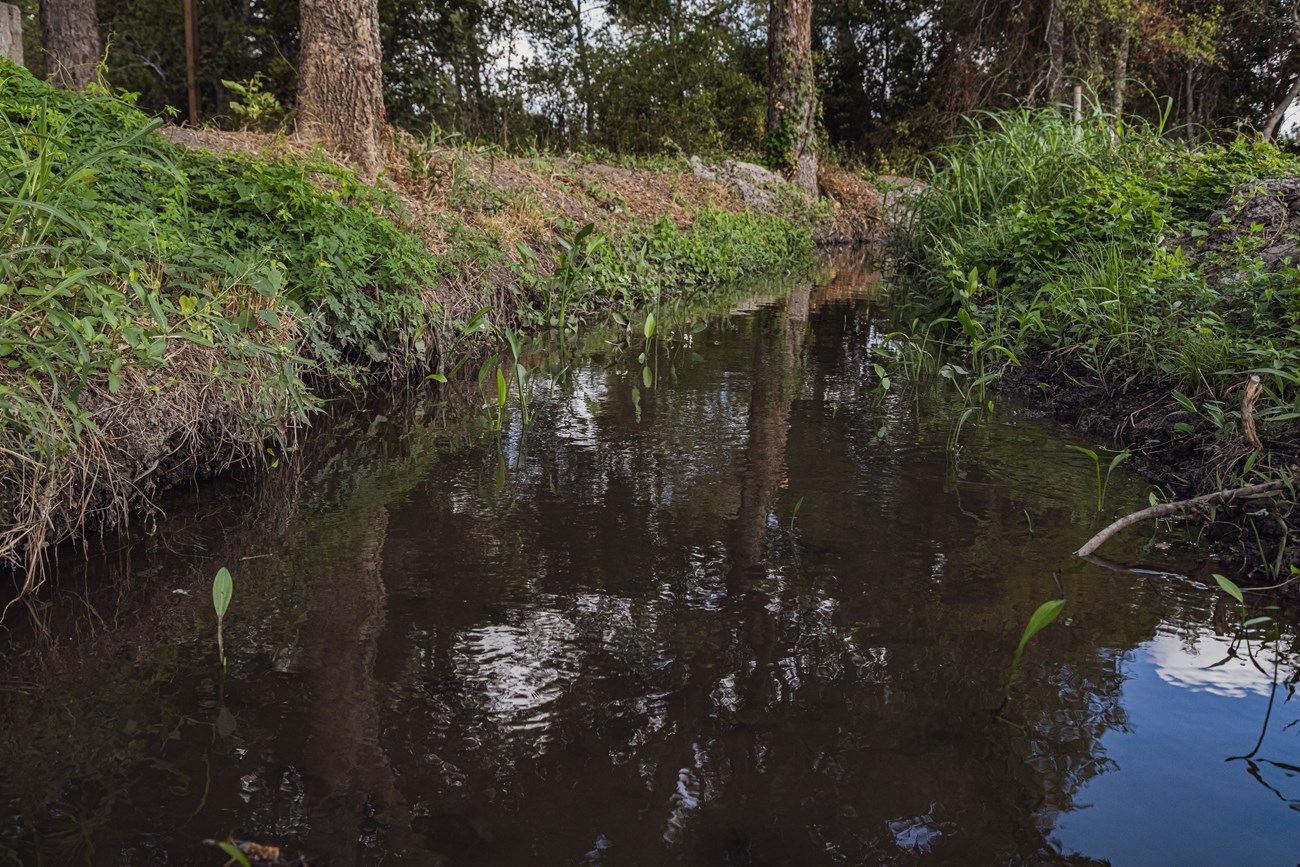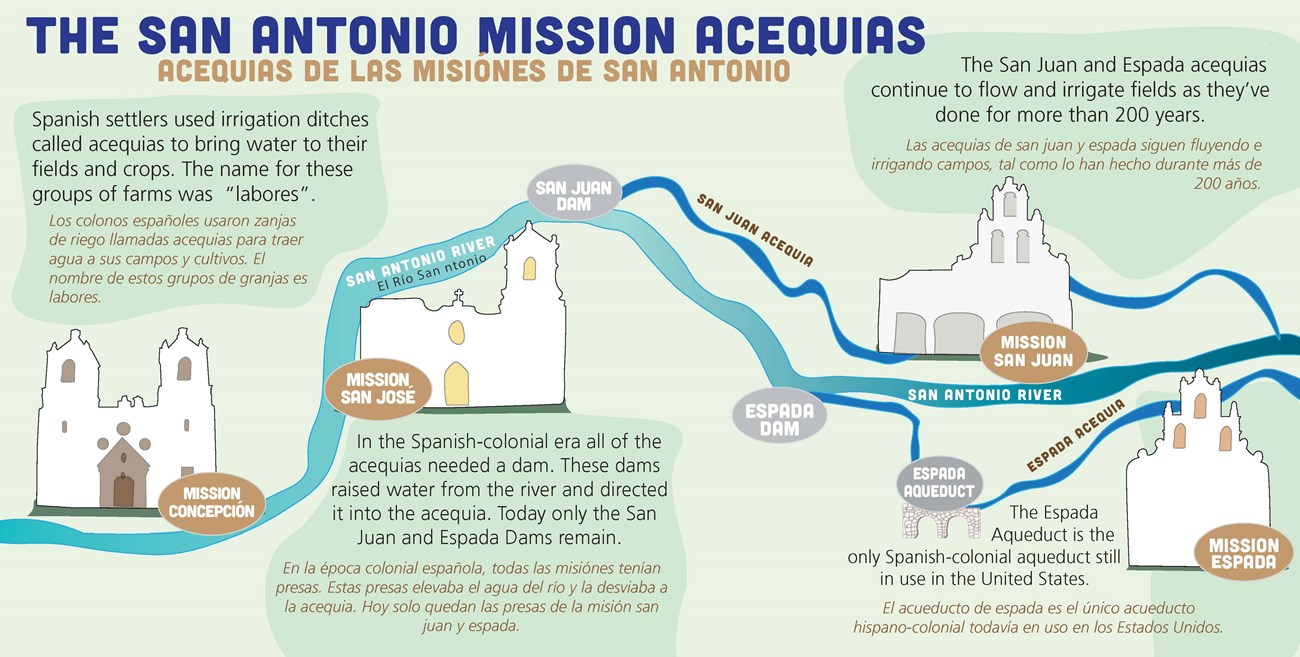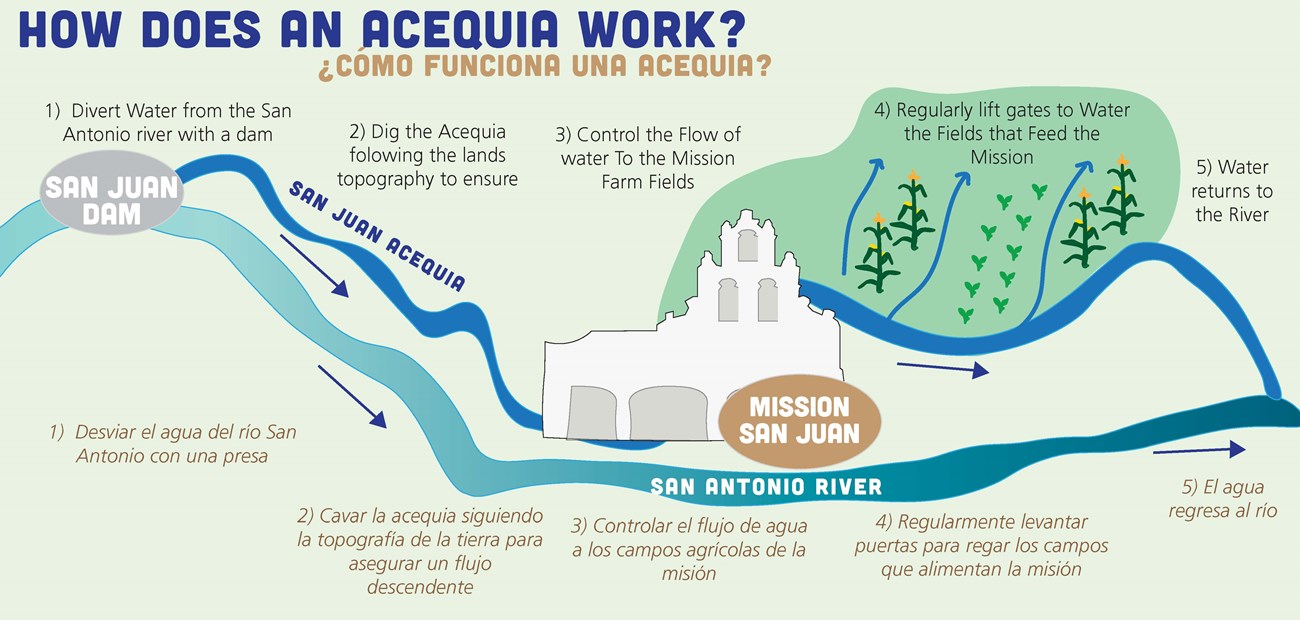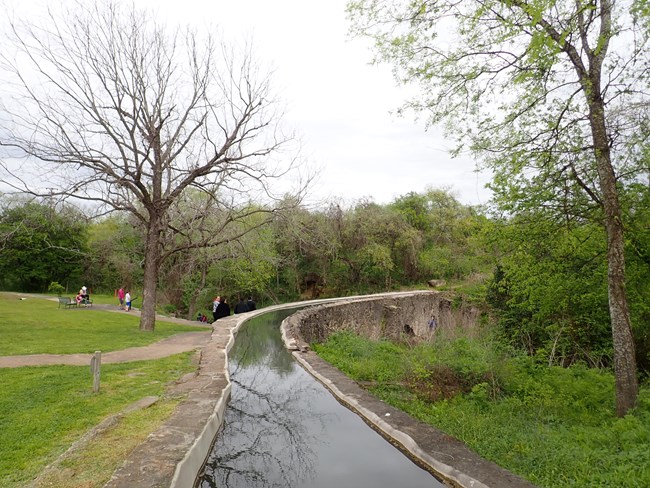
NPS Graphic 
NPS Photo The San Antonio River, or Yanaguana as known to the Indigenous of the area, has given the people and animals of South Texas life for thousands of years. This waterway was transformed by Spanish communities in the early 1700s to give life in a different way, through agriculture. Along with religion, language, and culture, the Spanish implemented European farming practices. In these developing mission communities, growing crops such as corn, beans, squash, and peppers were part of survival, and in this South Texas climate, you need irrigation to grow these crops. Acequia = Irrigation ditch

NPS Image The mission inhabitants in the early 1700s began to dig these acequias to water the farm fields to grow their food, even before the mission walls or stone churches begun to be built. These ditches would begin about 3 miles north of the mission farmland with a dam diverting water out of the San Antonio River. Using the landscape’s topography, they planned and dug these acequias following the natural paths of the land to allow gravity to move the water from the San Antonio River to the farmlands, and then back into the river. Once the water reached the farmlands, sluice gates would allow for the water to be controlled into the rows of crops. 
NPS Photo 
NPS Photo Durante la construcción del sistema de acequia para la misión Espada, se cruzaron con un arroyo, ahora conocido como Sixmile Creek. ¿Cómo consiguieron que el agua siguiera fluyendo en la dirección que necesitaban? Construyeron un acueducto. El acueducto de Espada sirve como un puente para que el agua sea transportada de un lado a otro del arroyo permitiendo que la acequia continúe fluyendo a las tierras de cultivo de la misión. El acueducto de Espada es el acueducto colonial español más antiguo de los Estados Unidos. Learn more and see acequia maps here: Acequias: Irrigation for a Growing Community (arcgis.com) Acequias YouTube VideoSan Antonio Missions National Historical Park presents this video highlighting one of the park's most important features, the historic irrigation system or acequias and aqueduct. This video was made with the 4th grade TEKS 9.(A) and 9.(B) in mind. Chats with a RangerChats with a Ranger is sort of like a mini podcast! Listen to hear short clips of interviews with experts about different aspects of San Antonio Missions National Historical Park. This one is about the acequias of the San Antonio Missions and the maintenance it takes to keep them flowing. |
Last updated: May 28, 2025
